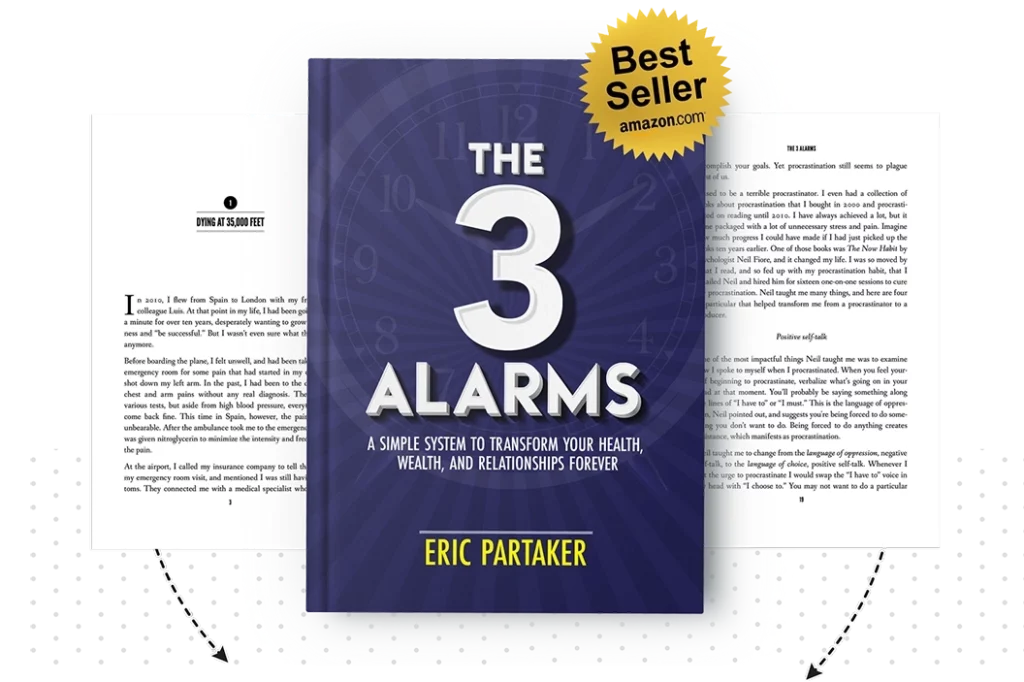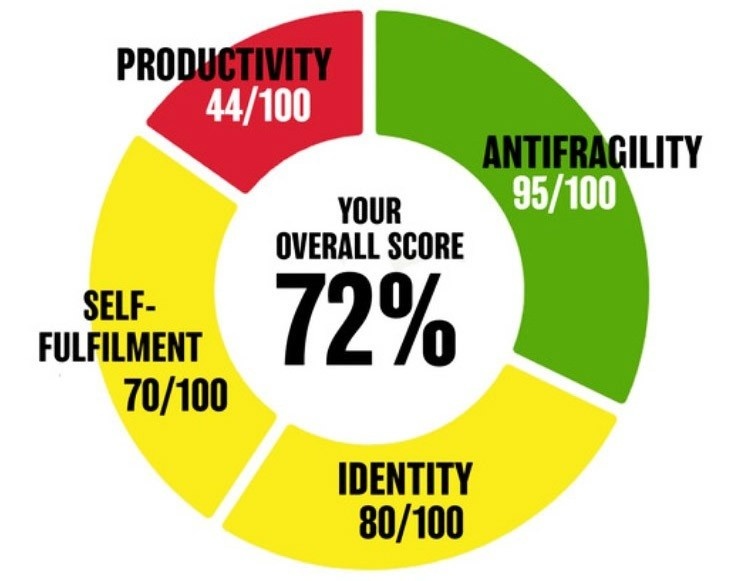SUMMARY
- Have you ever started working on your goals with the best of intentions, but then suddenly stopped? Or maybe you’re making great progress and then something unexpected happens and completely derails things? The truth is, unless you get into the habit of pressure testing your goals, this pattern will never end and you’ll never achieve the success you’re looking for.
- A tip that I’ve picked up from some of my clients with military experience like Navy SEALs and Green Berets is the importance of planning for what could go wrong when setting goals. In the special forces, they’re taught to ‘dirt dive’ their mission and predict obstacles that could prevent success – and we need to do the same with our business goals to avoid getting blind-sided.
- NYU Psychologist Gabriele Oettingen’s WOOP framework for goal setting stands for Wish-Outcome-Obstacle-Plan. The reason it’s so effective is because rather than just focusing on where you want to go, the framework forces you to enter reality and think about what could go wrong, making you more resilient in the face of challenges.
- There are many different ways you can apply these principles. First, you can do it right at the outset of setting a goal. Second you can invite others to do that WOOP process with you because you may have blind spots that they may be able to identify that you can’t.
- Finally you can also think about the process from a daily point of view. Each and every day, you’ll have a wish, outcomes that you’ll want to achieve and obstacles that can show up and derail your day. So at the start of every day, you can be thinking about plans to counter attack every single one of those obstacles using a process like this.
TRANSCRIPT
Have you ever started working on your goals with the best of intentions, but then suddenly stopped, or maybe you’re making great progress and then something unexpected happens? It just completely derails things, unless you get into the habit of pressure testing your goals, this pattern will never end.
Hi, my name is Eric Partaker and I help CEOs, entrepreneurs and individuals break through their barriers and reach their highest potential. Some of my clients even include former US special forces, operatives like Green Berets and Navy Seals. One of the things that I’ve learned from these guys is that they dirt-dive their missions. They think ahead of time: what are all the things that could go wrong? And they think in advance: how would I counteract each of those things going wrong, going off plan? And they’re really taking a lot of conscious effort to think through this before they start the mission, or before you start your journey towards whatever goal it is that you’re trying to achieve.
And then I came across some work done by Gabriele Oettingen, where she came up with this framework called WOOP, which stands for wish, outcome, obstacle and plan – similar to what the special forces guys are trying to do. This is a framework which takes traditional positive thinking and rubs it up against reality. The reality of things not going to plan, because think about it: when do things ever go to plan? Usually something always is going off plan. And frankly, when I think about my new year’s resolutions, think about those. For example, how many times I would get to February and I didn’t even have the thought of “gosh, I’m not doing my new year’s resolutions”. It was more like, “Oh, what were they and totally forgot about them”. My plans got so derailed that they were just obliterated, let alone just progressing more slowly.
So with these two kinds of schools-of-thought combined, that special forces training of thinking – what are all the things that could go wrong in this mission? How would we counteract each and every one of those potential obstacles or things not going our way? And then taking Gabrielle’s framework, WOOP – wish, outcome, obstacle, plan. I like to fuse these things together, and as special forces training call it, dirt-diving the mission. When you’re going to think of all the things that could go wrong, and within Gabrielle’s framework of WOOP it’s that obstacle and plan piece that’s particularly important. Now let me break down using WOOP how you can use this to pressure-test your goals and think much like a Navy Seal or a Green Beret and achieve whatever it is that you’re trying to achieve with less pain, less and more resilience, or even better yet, more antifragility, which means that the harder things get, the stronger you become – the more resolve you develop.
So let’s break down the framework. First we start with wishes – simply what it is that you want to achieve. Whatever the goal may be. So let’s say our goal is to buy a new house and then the outcomes are, what are all the benefits associated with that? We’re going to feel better. We’re going to have more space. We’re going to start being able to work from home more often; we’re going to be able to invite more friends and family to visit us and have a good time – just general increased feelings of happiness. So that’s typically where the goal setting process stops because people stop with the positive thinking, but the Navy Seal or the Green Beret or someone using the WOOP framework goes, “ah, we need to enter reality. We need to bring the unexpected into the picture by anticipating: what are those things that could go wrong?”
So in the sense of buying the house, what are the obstacles? Well, somebody could outfit us, right? Or the financing that we’re arranging could not come through, or our current home, which we’re trying to sell, may not sell in time. And we might lose the opportunity to buy that next house. And then we develop a plan for each of those, just like the Navy Seal would, visualizing the mission with an enemy, perhaps coming out of every corner or a different area and thinking, how would they counteract each of those things? So in the example that we just gave, becoming outbid on the house, what could be a potential plan there? Well, we might want to bid on other homes similar to that. So that’s not the only one we’re going for, or we might want to ask ourselves how much is it really worth to us?
Because if it’s worth a lot, I mean, we’re talking about a home here. If it’s worth a lot, if it’s the dream home, maybe we’re willing to bid a little bit more. And we’re thinking about that in advance so that when the enemy appears, if you will; when the unexpected happens, we’re not taken off guard. We’re ready to deal with it.
The second example was not being able to raise the finance with that house. So maybe we want to explore a couple of backup financing alternatives, friends and families that we could perhaps borrow money from, or alternative banks that we could loan the money from or borrow the money from.
And then, last but not least, we talked about the obstacle of, well, maybe our home isn’t sold in time for us to buy that new home. And so again, what could a plan there be? Maybe we need more realtors or more estate agents marketing the house. Maybe we want to think about the pricing or other incentives that we can add to make sure that our house sells – but we’re thinking about these things in advance. So that’s the basic framework of WOOP.
I also encourage you to use it in a few different ways. So one: do it right at the outset of setting a goal so much like a Navy Seal that dirt-dives the mission, right at the outset of setting that goal, think about the things that could go wrong, all the obstacles and the plans for each. Number two: invite others to kind of do that WOOP process with you because you may have blind spots. What are the obstacles that they might see that you don’t get? With that Navy seal example, they’re not just doing that individually and not talking to each other – they’re all thinking about it in a team setting. And they’re all contributing to the potential obstacles and they’re all contributing to the potential plans.
Last but not least, we’re talking about WOOP on a macro level with doing it before your goal setting. We’re talking about it from a community point of view, involving others in the process. And then last but not least, you should also just think about it from your day point of view. And what I mean by that is that if you’re going to achieve any goal, it requires units of time to be racked up in repetition, to equal the completion of that goal. The day is a perfect unit of time. So you should be WOOPing each and every day. So what I mean is, in the context of a day, you’ll have a wish, you’ll have outcomes that you’ll want to achieve; you’ll have obstacles that can show up and derail your day; procrastination distraction; a meeting that you’re dreading. And at the start of every day, you can be thinking about plans to counter attack every single one of those obstacles.
I’ll give you one final, quick example of a client story. So this is a person I coach who is the head of a large financial services firm, and they have a newsletter that goes out every single quarter. One of the things that he was frustrated with from a goal point of view is that the newsletter wasn’t going out as painlessly and as efficiently and as on time as he would like. And so we WOOPed it. So what’s the wish? Get the newsletter out on time without pain. Outcome is he’ll feel a lot better, the clients will feel better. What were the obstacles? The obstacles that we identified were that he simply wasn’t planning the proper time in his calendar for the different segments of the newsletters creation to create the newsletter. So what was the plan? Well, it was directly related to the obstacle. We scheduled time blocks for the entire year, at the right time in each quarter, where he would be super focused on either working on the newsletter or doing the activities required to delegate the newsletter components to those in the team most capable of completing them. And within one single quarter, that single activity that had caused him so much pain suddenly became painless because we whipped it and we wrapped it into his day as well.




